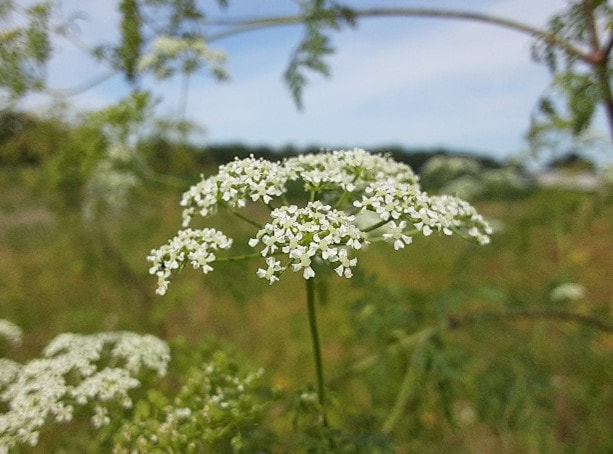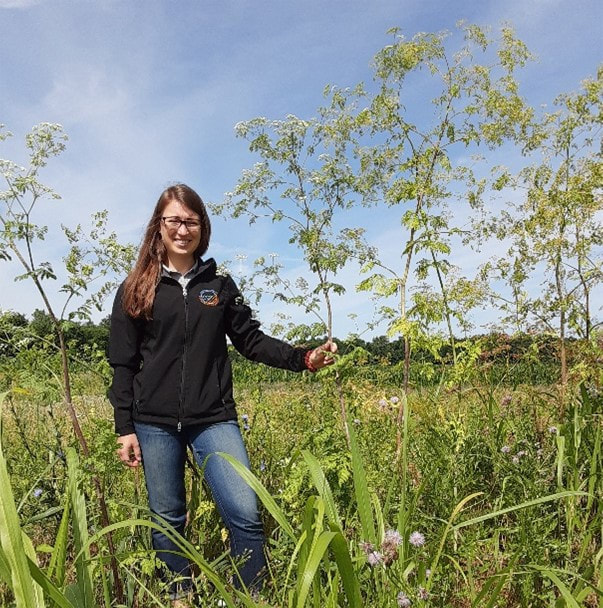 By: Sarah Meadows Poison Hemlock is an invasive species that commonly grows in southwest Ohio. They are not dangerous to look at or touch, and don’t cause a rash or blisters like the familiar poison ivy. However, if the sap becomes aerosolized or is ingested, it can cause respiratory failure and even death in mammals. It is important to be aware that poison hemlock plants grow in our area, and to understand proper plant identification to safely enjoy outdoor activities. As a biennial plant with a 2-year life cycle, it can be helpful to learn to identify Poison Hemlock at each stage. During the first year it forms a large rosette with triangular, lacey, fern-like leaves. During the second year, a 3-8 ft. tall flowering plant grows. The stems are green/white with purple spots, freely branched, and not hairy. It has umbrella-like clusters of small white flowers with five petals and blooms from June to August. The most commonly mistaken look-alike is another parsley family member, non-native Queen Anne’s Lace, which has a green hairy stem with no spots. The white flower clusters have a flatter top with a small dark red-purple floret in the center. Proper management of Poison Hemlock is important, so it does not become a hazard. Caution should be exercised if mowing large infestations because the sap may become aerosolized. Equipment with unshrouded blades (including string trimmers) should not be used, and PPE should be considered if cutting a large number of plants. For the same reason, plants should never be burned. Do not mow or cut plants after they have gone to seed; they are prolific seeders, and this is a good way to grow even more the next year! Hand pulling (gloves, long sleeves, and safety glasses are recommended) is effective for small numbers of plants, as is regular mowing when the plants are still short before they go to bloom. There are several herbicides (glyphosate, triclopyr, and others) which are effective, and do not require cutting or contact with the plant. When using herbicides, always read the label. Whichever control method is used, it will be most effective if done in the spring before the plant goes to bloom. For more detailed information and pictures, including the story of an unsuspecting and unfortunate homeowner ‘cutting weeds’ in his yard, check out this article by OSU Extension: https://bygl.osu.edu/index.php/node/1996 |
|
Office Hours: Monday to Friday 8 am to 4 pm
1325 East Kemper Road, Suite 115 Cincinnati, OH 45246 Phone: (513) 772-7645 The Hamilton County Soil & Water Conservation District is a legal subdivision of the State of Ohio responsible for the conservation of natural resources within Hamilton County, Ohio. We have a special emphasis on soil and water with a focus on assisting landowners in planning and applying conservation practices on the land. HCSWCD is dedicated to the sustainable use of our natural resources and to encouraging positive behavioral changes that produce a higher quality of life for our citizens. The District assists all Hamilton County residents, schools and jurisdictions through our free services and dynamic partnerships that continually provide innovative solutions for the challenges of our region.
|
Talk to Us!
|







 RSS Feed
RSS Feed